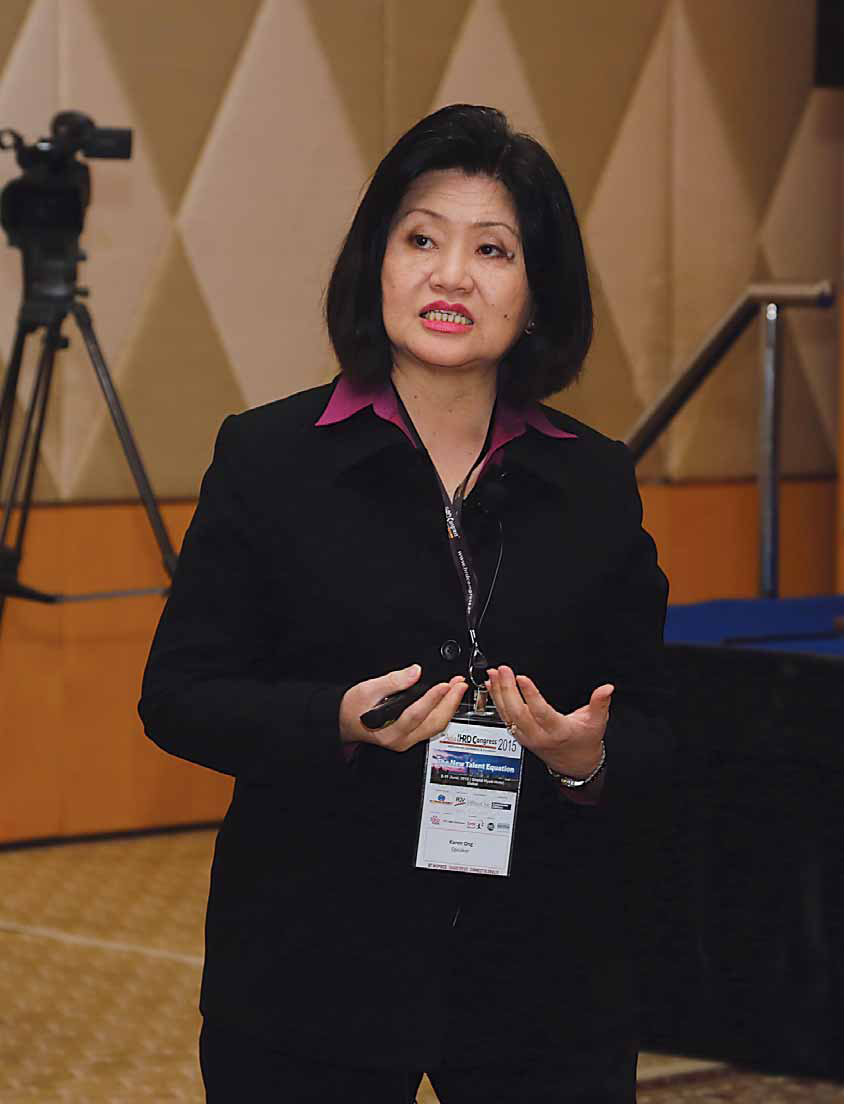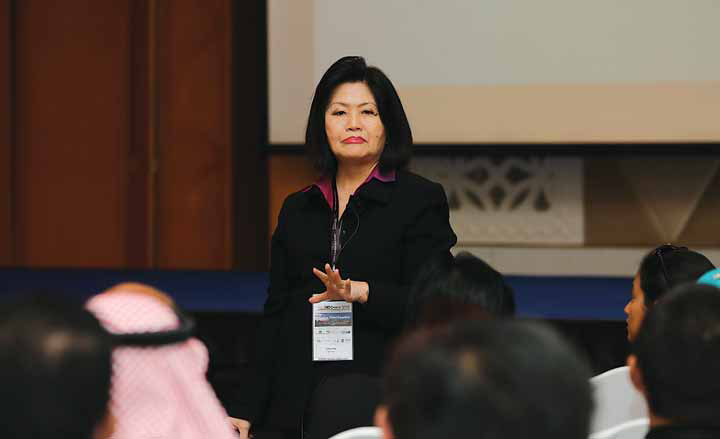
Attention spans are getting shorter than ever these days. Here are some tips from KAREN ONG, Director & Master Trainer at SMR HR Group, on how to hook your audience in ten minutes or less
Karen Ong is Director & Master Trainer at Malaysia’s SMR HR Group, a leading corporate training company with a big presence in the GCC countries where it offers services in sectors like education, technology and human resources. Prior to SMR Group, Karen worked at a top Fortune 100 company based in Singapore. She has been conducting trainer workshops for participants ranging from senior managers and educators to young, fresh graduates. Her sessions have been held in 13 countries including Malaysia, Indonesia, India, Japan, Brunei and some major countries of the Middle East. Her training approach is fully learner-centric and engagement-focused.
Being one of the key speakers at the recently, held Asian HRD Congress 2015 in Dubai, Karen delighted her audience with her talk on ‘Creating Engaging Learner Experience’ through her highly personable and interactive style of delivery. In her presentation, she pointed out that engaging today’s audience during a training session is pretty challenging. The average attention span of a learner lasts “about three minutes only” before they feel the impulse to begin a new activity. She said that recent studies have shown that if you manage to engage past that threshold, the average adult listens effectively for only about 15-20 minutes before his/her mind begins to wander. Survey results, she added, also show that as many as 91 percent of business professionals admitted to ‘daydreaming, using their mobile devices for texting, checking emails and Whatsapp messages and 39 percent confessed to simply dozing off ’. In all such circumstances, the responsibility of audience engagement ‘always lies with the speaker’ and hence ‘you only have a few minutes to pique the interest of your audience’.
Corporate Citizen spoke to this accredited master trainer who is “passionate about helping corporate people perform better” and got some tips on how to engage and captivate your audience. Excerpts:
I always knew that I’m good at teaching people how to do well on stage and make a presentation. So, I first did a diploma in management from the UK and then I became both an Accredited and Master Training Professional from ILM, UK. I’m a Certified Instructor in Frontline Leadership (Zengar-Miller/Achieve Global) from the USA, and I’ve followed it up by successfully completing my Certificate in Training & Development (CITD) from the Chartered Institute of Personal Development (CIPD), UK. But I evolved gradually as a trainer over the last two decades. It’s been over 20 years in the making. I leverage on my 20 years of experience in facilitating workshops as I’ve an innate ability to relate to people from different cultures and levels to deliver an authentic learning experience which is high-content and high-engagement.
It is happening because today there are too many distractions. Besides that, many a time, they are also distressed or preoccupied with challenges at the workplace. Sometimes, they’re more interested in a message on email or WhatsApp or Facebook or Twitter than what you have to say.
Being a trainer myself with so many years of experience, I know it’s always a very big challenge to get the attention of your audience every time you take the stage. It doesn’t matter whether it’s a short session at a small boardroom meeting or a longer one at a big conference in a large auditorium. You’ve to compete against dozens of distractions. And, if you fail to connect with your audience, chances are that you may lose your big client/investor on some new business opportunity. It’s important that you prepare and deliver an engaging presentation.
So, the critical factor is: How do you get them to pay attention to you continuously throughout the presentation?
I use minimum text, more pictures and keep it short because if you go on for too long, it becomes boring for the audience
‘The current generation of young people born in the technology era is fully addicted to their mobile phones and that’s a lot of distraction’

Then it becomes even more challenging because the current generation of young people born in the technology era is fully addicted to their mobile phones and that’s a lot of distraction. Though they claim they can do multitasking which doesn’t work. There are always some of them who don’t seem to be listening. There are three things that I always focus on at the workshops. Number one, how do I grab the attention and what should I do to keep the attention through out the whole of my presentation? Number two, how do I get them to participate with me because a one-way presentation is one of the worst possible ways of transferring knowledge from one person to another. Number three, how do I make sure that they imbibe and apply the information and strategies they learn, at their workplace.
Over the years, I’ve presented countless times to all types of people—investors, employees, students, customers and board members—and I’ve learned that there are five tactics that always work for me in keeping the audience engaged.
Tell stories that your audience can relate to. I try to pep up my session with anecdotes and use lots of stories because stories are very visual and when anything is visual, they remember it
By Pradeep Mathur